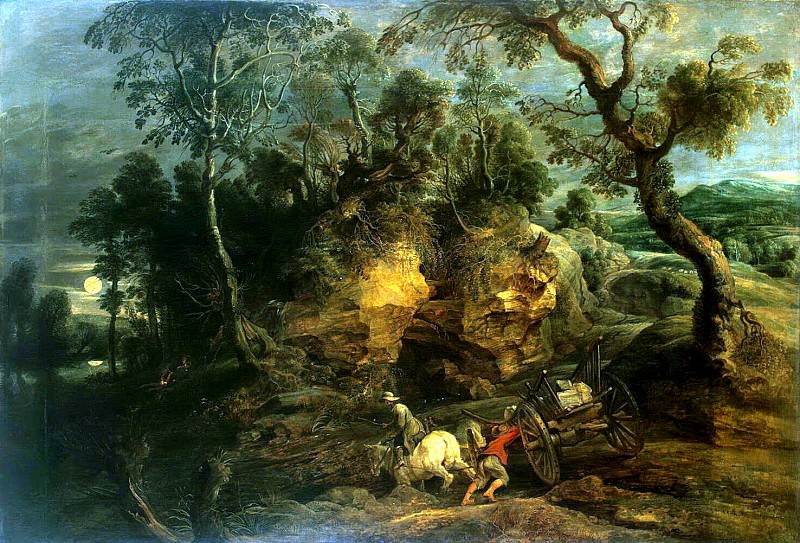The drivers stones Peter Paul Rubens (1577-1640)
Peter Paul Rubens – The drivers stones
Edit attribution
Image taken from other album: gallerix.org/s/797322277/N/549066162/
Download full size: 1476×1001 px (0,9 Mb)
Painter: Peter Paul Rubens
The landscape painting of Peter Paul Rubens is the culmination of the development of 17th-century Flemish art. During this period the foundations of the social consciousness characteristic of the incipient New Age were being laid, when the visual arts of Western Europe were actively rethinking earlier views of the relationship between nature and man. In landscape painting of that time, nature was seen in a generalized form, where the living and the inanimate were closely intertwined. In The Handful of Stones, as in other landscapes by Rubens, the surrounding world is seen as a single, mighty and formidable force.
Description of Peter Rubens’s painting The Carriers of Stones
The landscape painting of Peter Paul Rubens is the culmination of the development of 17th-century Flemish art. During this period the foundations of the social consciousness characteristic of the incipient New Age were being laid, when the visual arts of Western Europe were actively rethinking earlier views of the relationship between nature and man. In landscape painting of that time, nature was seen in a generalized form, where the living and the inanimate were closely intertwined.
In The Handful of Stones, as in other landscapes by Rubens, the surrounding world is seen as a single, mighty and formidable force. In the center you see heavy piles of rocks and boulders, densely covered with the powerful roots of tall trees, the uneven trunks of which are in constant, perpetual motion. The same continuous movement takes place in the sky, where the rays of the setting sun are already replaced by the rising full moon. In the foreground, the artist shows the people - the stonecutters, busy with their hard work. The arrangement of the painting’s elements, combining horizontal and vertical perspective, gives the landscape a three-dimensional sense of volume and depth.
Depicting the power and strength of nature, the painter introduces the motif of transformative human activity into the picture: Man is presented here not as a passive creature, but as an active creator of the surrounding world, a direct participant in the processes occurring in it. Such a worldview, which developed at the end of the Middle Ages, became predominant in Western European art in later centuries.
Кому понравилось
Пожалуйста, подождите
На эту операцию может потребоваться несколько секунд.
Информация появится в новом окне,
если открытие новых окон не запрещено в настройках вашего браузера.
You need to login
Для работы с коллекциями – пожалуйста, войдите в аккаунт (open in new window).




















You cannot comment Why?